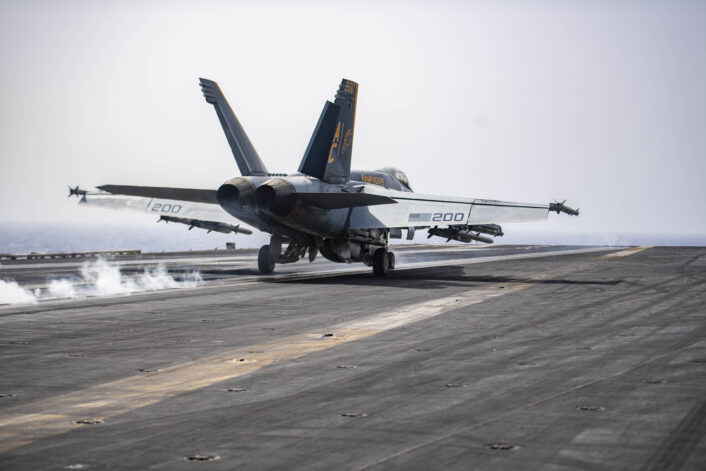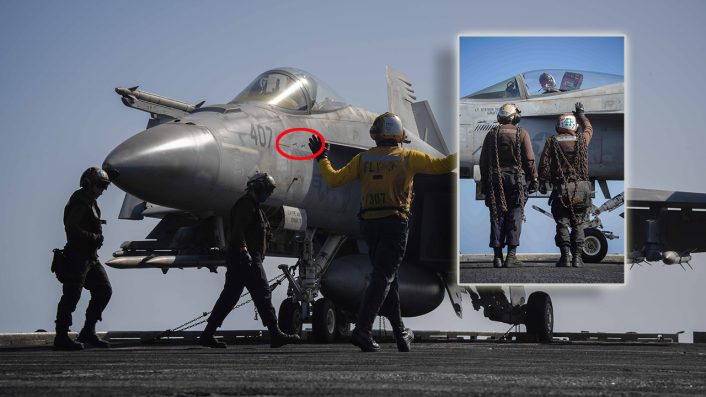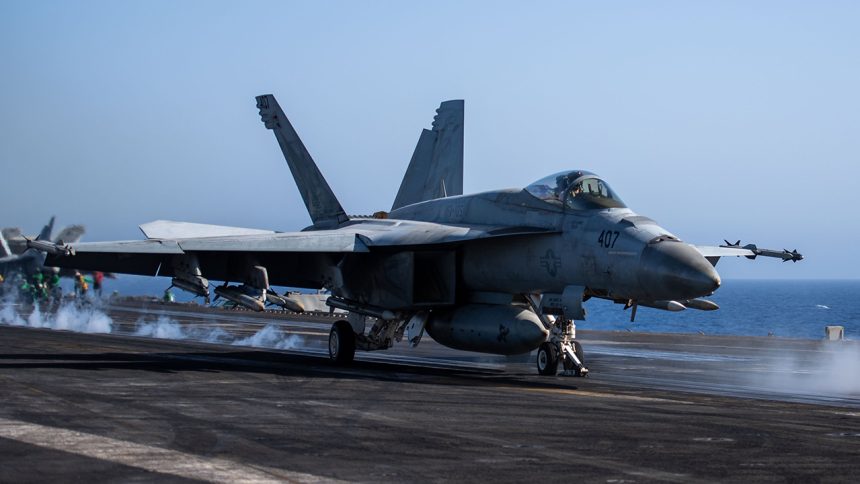The configuration speaks volume about the type of mission flown by the F/A-18E Super Hornets in the Red Sea, where the U.S. Navy aircraft are often called in to intercept Houthi drones.
USS Dwight D. Eisenhower (CVN-69) has been on station in Gulf of Aden/Red Sea area operations for months playing an important role in countering Houthi attacks. In fact, F/A-18E/F Super Hornets deployed aboard the US carrier have been called in to counter drone attacks on maritime traffic in the region multiple time since Dec. 26, 2023.
To mark the downing of the kamikaze drones, at least one F/A-18E from VFA-131 “Wildcats” was adorned with kill markings, including those of two one-way attack drones, as an image taken on Mar. 12, 2024, showed.
The focus on the air-to-air mission is clearly reaffirmed by new imagery just released by the U.S. Navy. In fact, some of the recent photos taken aboard USS Eisenhower show an F/A-18E Super Hornets of the VFA-105 “Gunslingers” and the VFA-83 “Rampagers” carrying 9 air-to-air missiles: five AIM-120 AMRAAMs and four AIM-9 Sidewinders.
A US Navy F/A-18E Super Hornet, armed with NINE air-to-air missiles (five AIM-120 AMRAAMs and four AIM-9 Sidewinders), launches off flight deck during flight operations aboard aircraft carrier USS Dwight D. Eisenhower (CVN-69) in Red Sea on April 20. pic.twitter.com/go0gTLW83V
— Ryan Chan 陳家翹 (@ryankakiuchan) May 7, 2024

The photos above were all taken between Apr. 19 and 20, as the supercarrier operated off Eritrea, before sailing towards Suez to enter the Mediterranean on Apr. 26, 2024. USS Eisenhower made a port call at Souda Bay, Crete, before heading back to the Red Sea where it is currently operating.
Interestingly, the new photos show that the kill markings were also applied to other Super Hornets.

Remarkably, the F/A-18E can carry a maximum loadout of 14 air-to-air missiles in a combination of medium-range AIM-120 Advanced Medium-Range Air-to-Air Missiles (AMRAAM) and short-range AIM-9 Sidewinder missiles. Still, nine AAMs (Air-to-Air Missiles) is a pretty unusual configuration for the U.S. Navy Super Hornets, that usually carry a mix of air-to-air and air-to-surface weaponry. Needless to say, the specific loadout can vary based on mission requirements.
When considering shooting down a drone, particularly a small UAV that may be relatively inexpensive, using an air-to-air missile like the AIM-120 could be seen as overkill due to the cost and capability of the weapon compared to the target.









